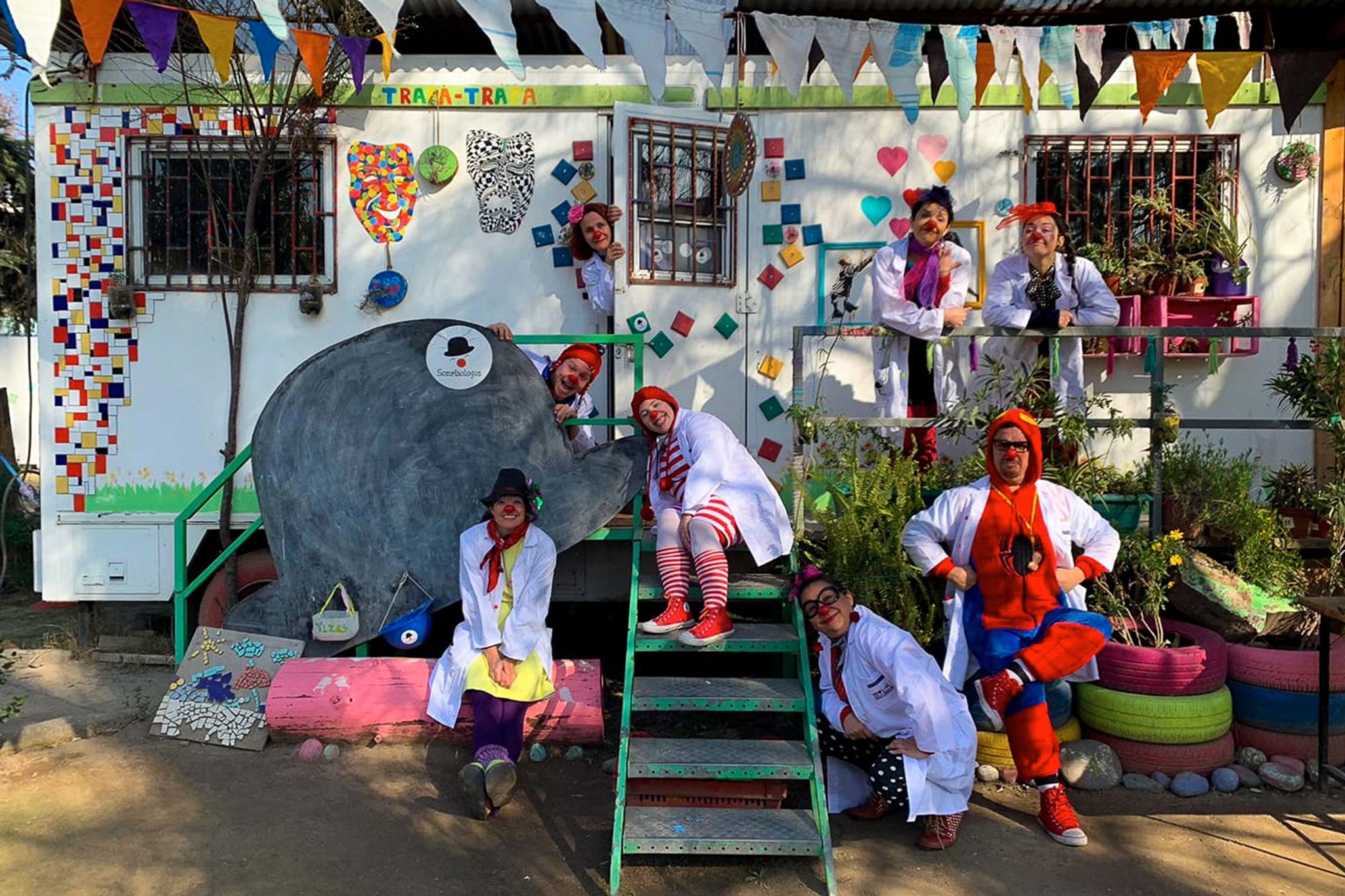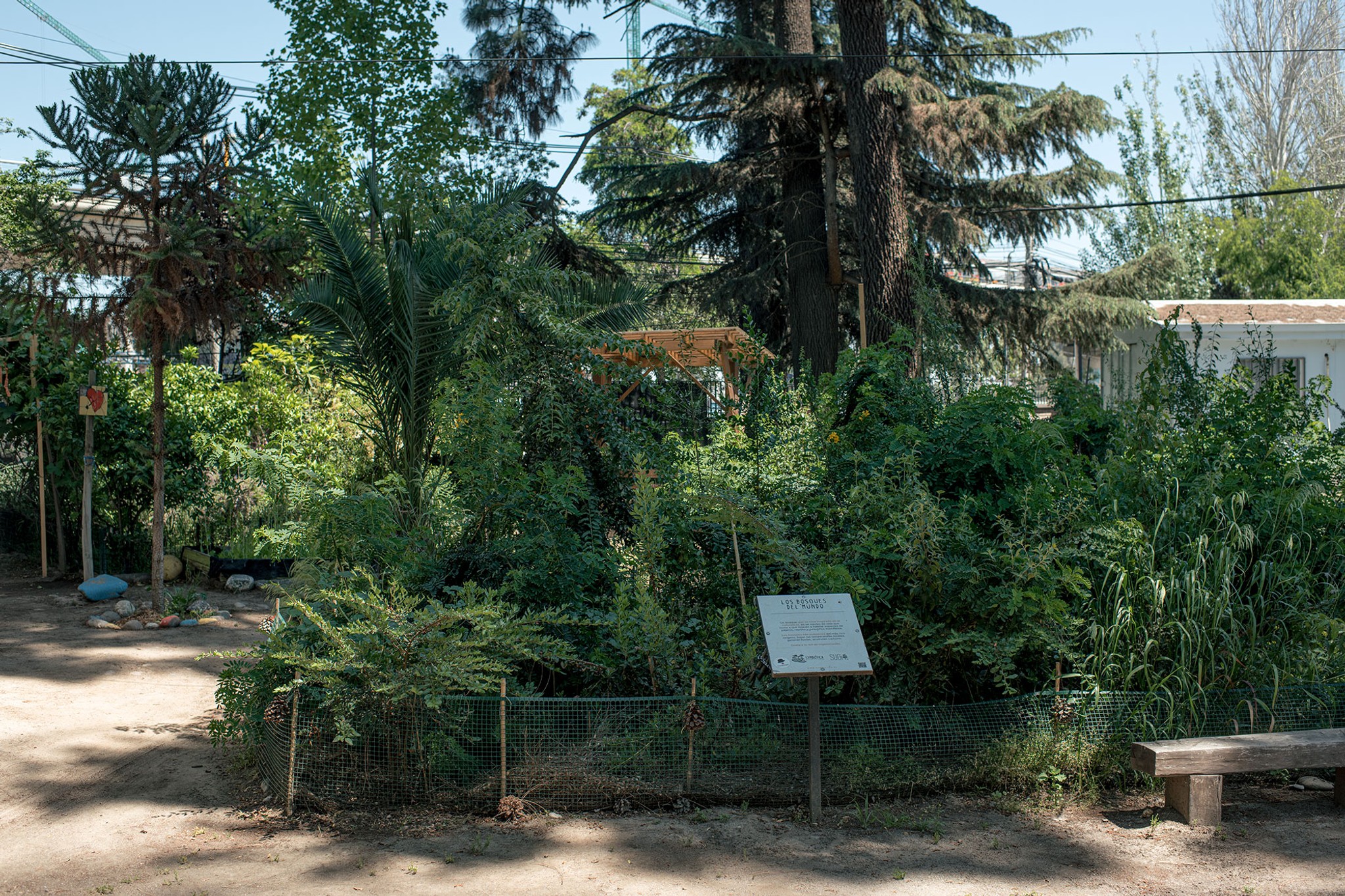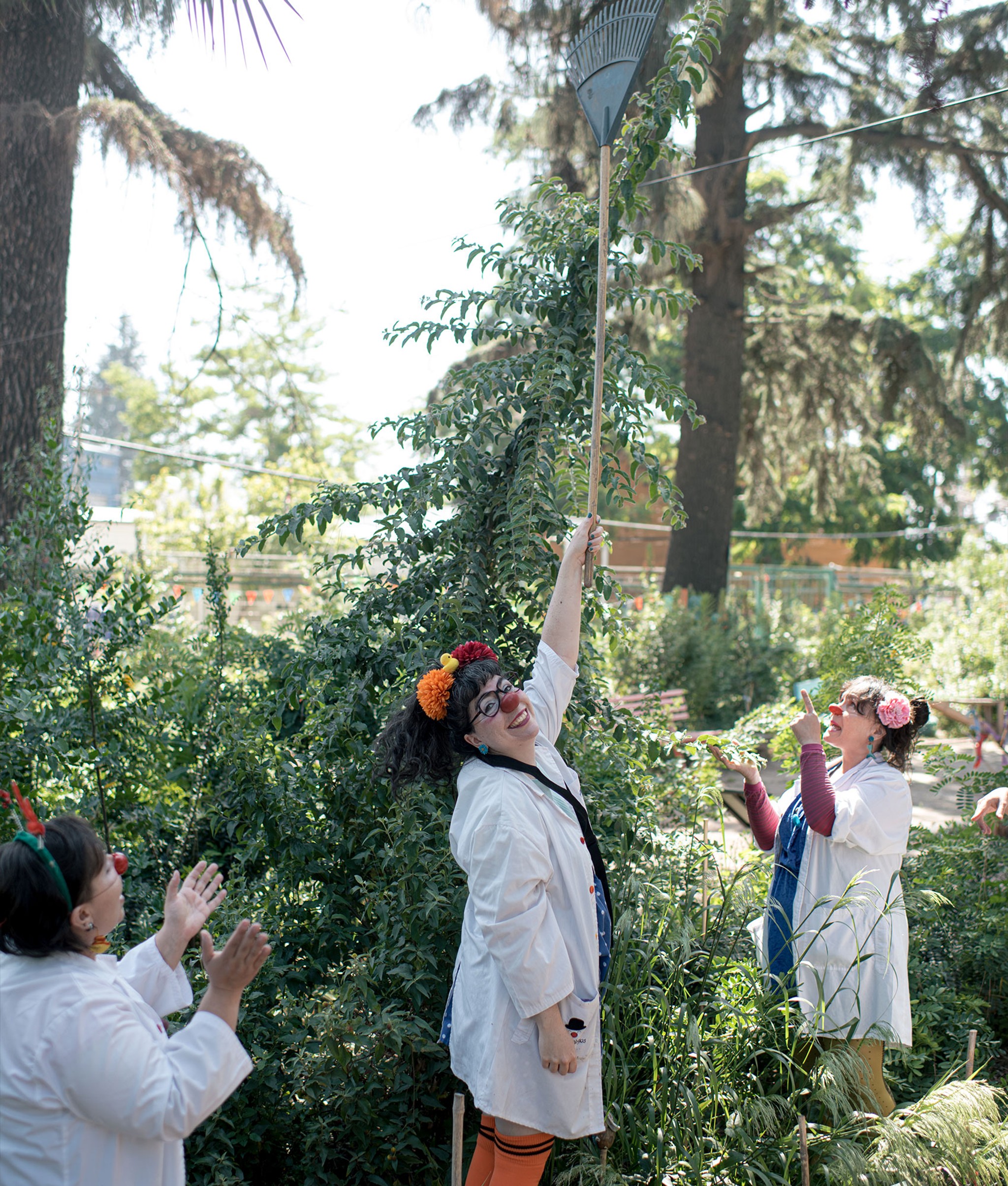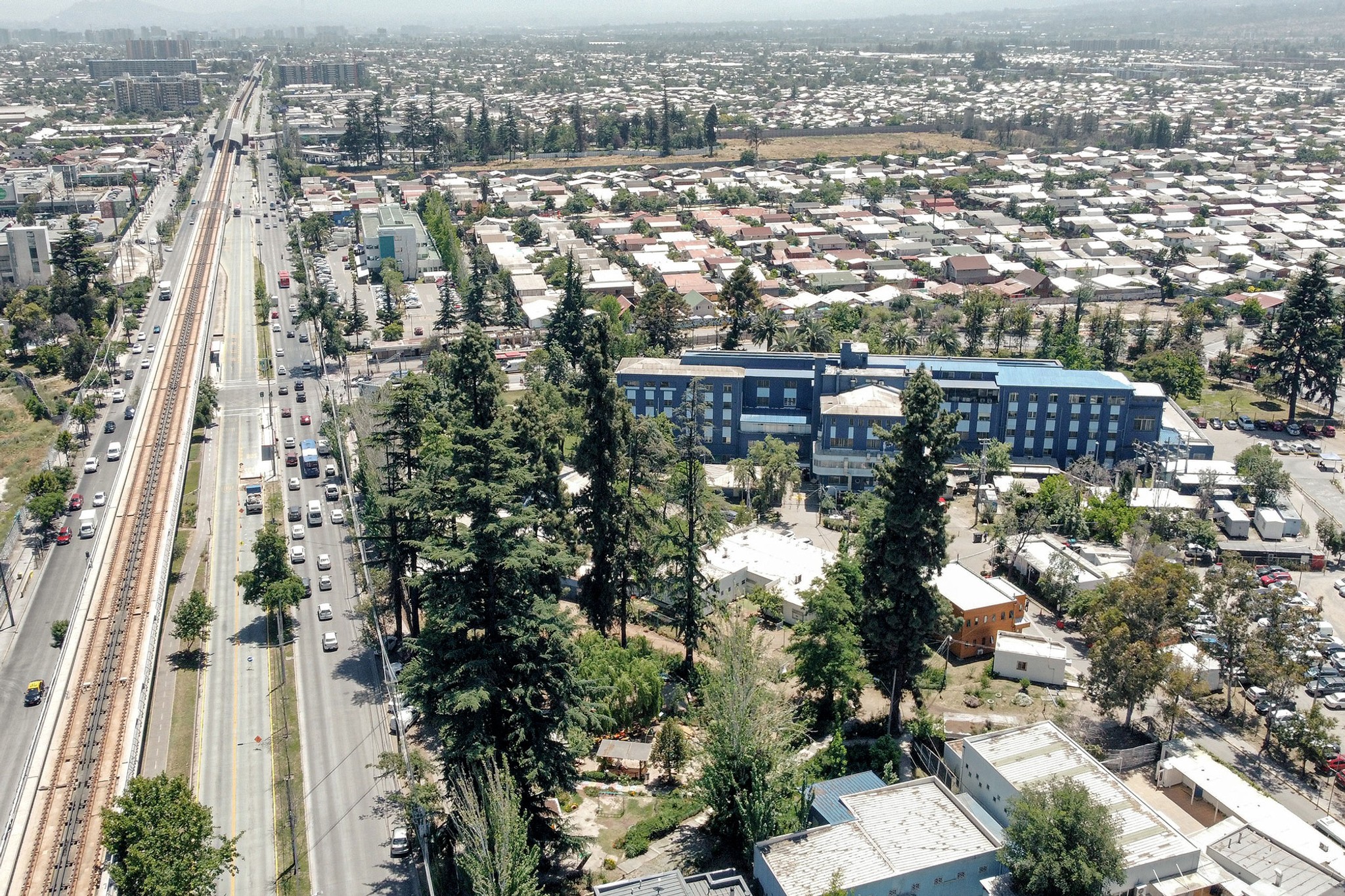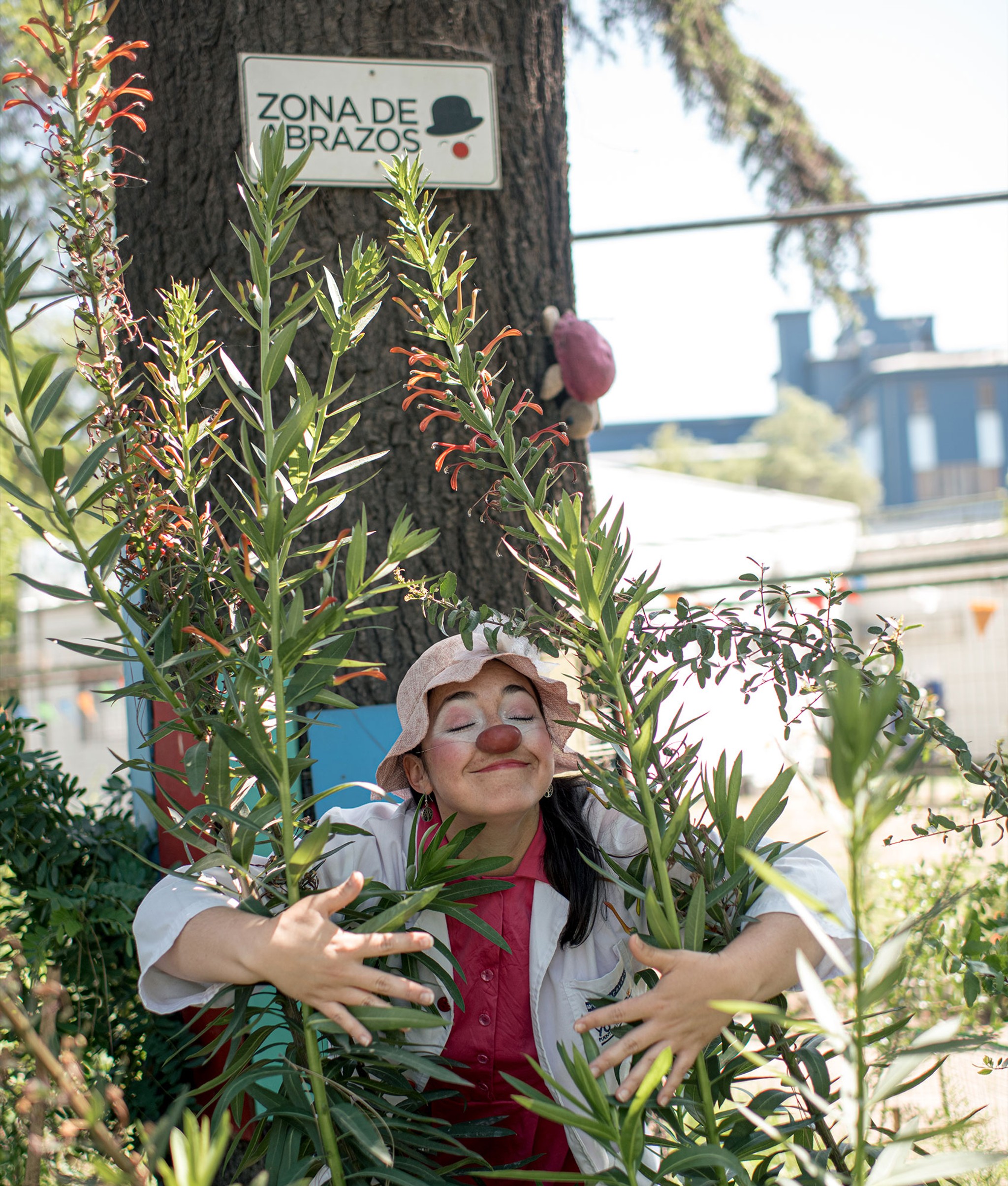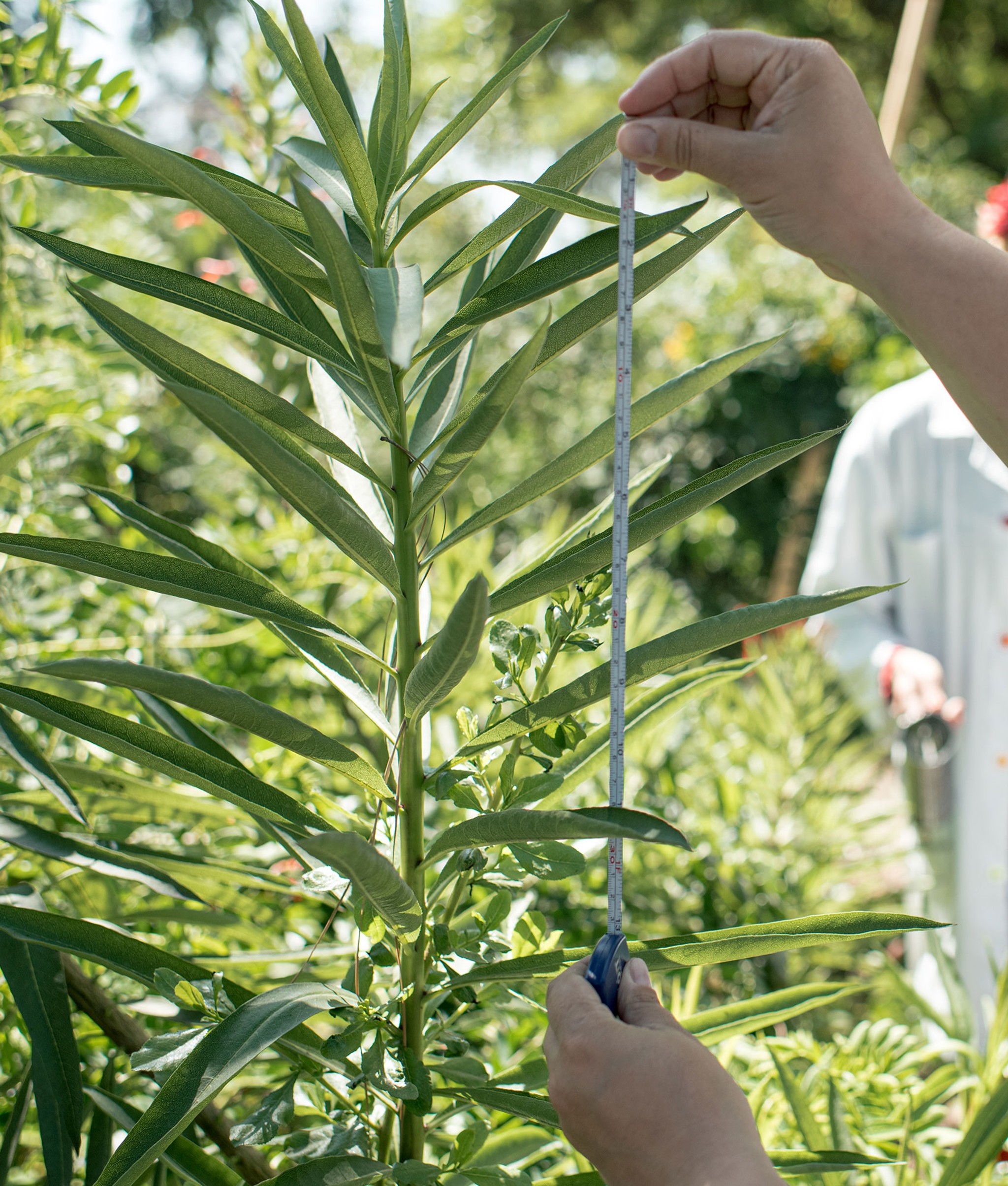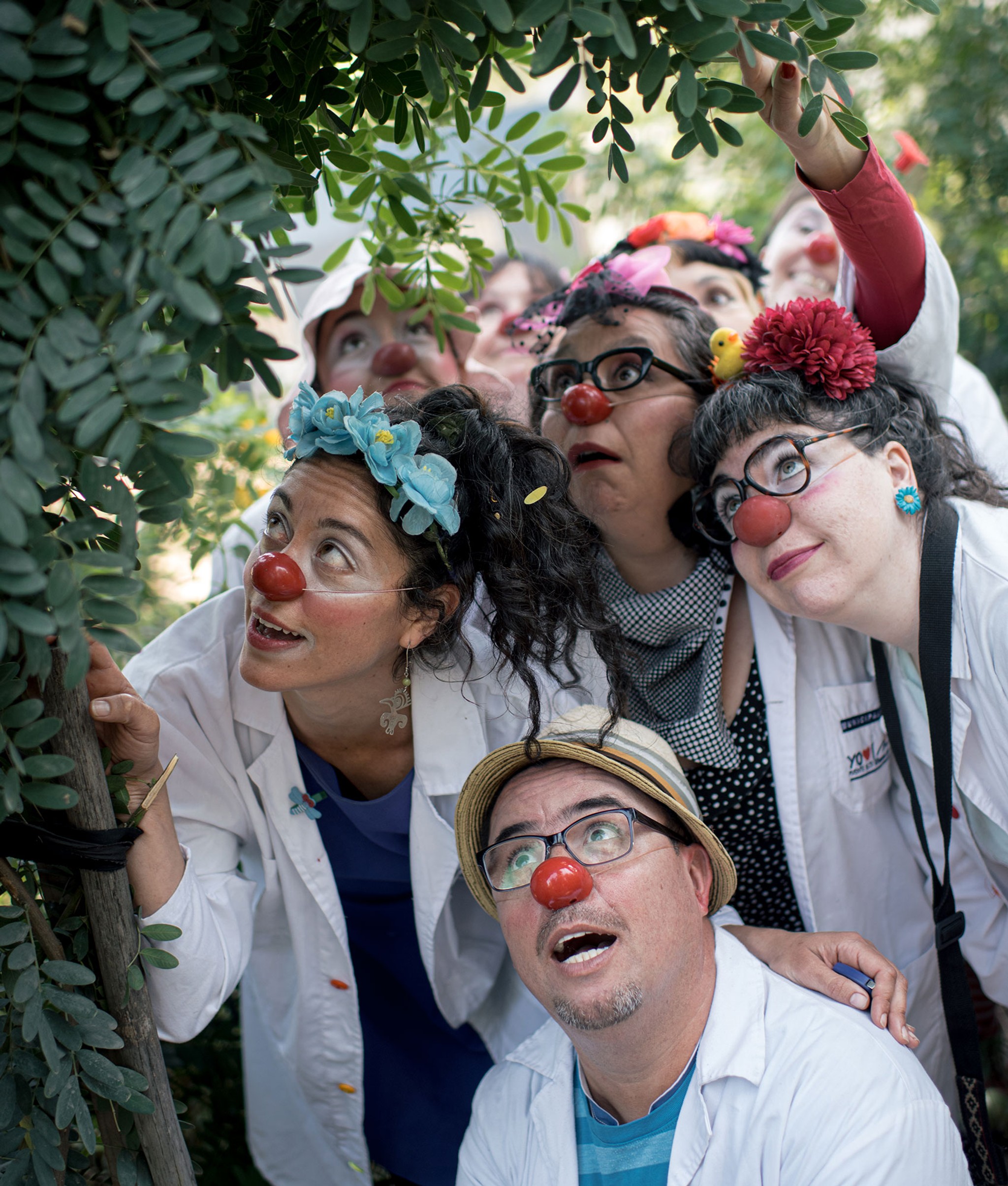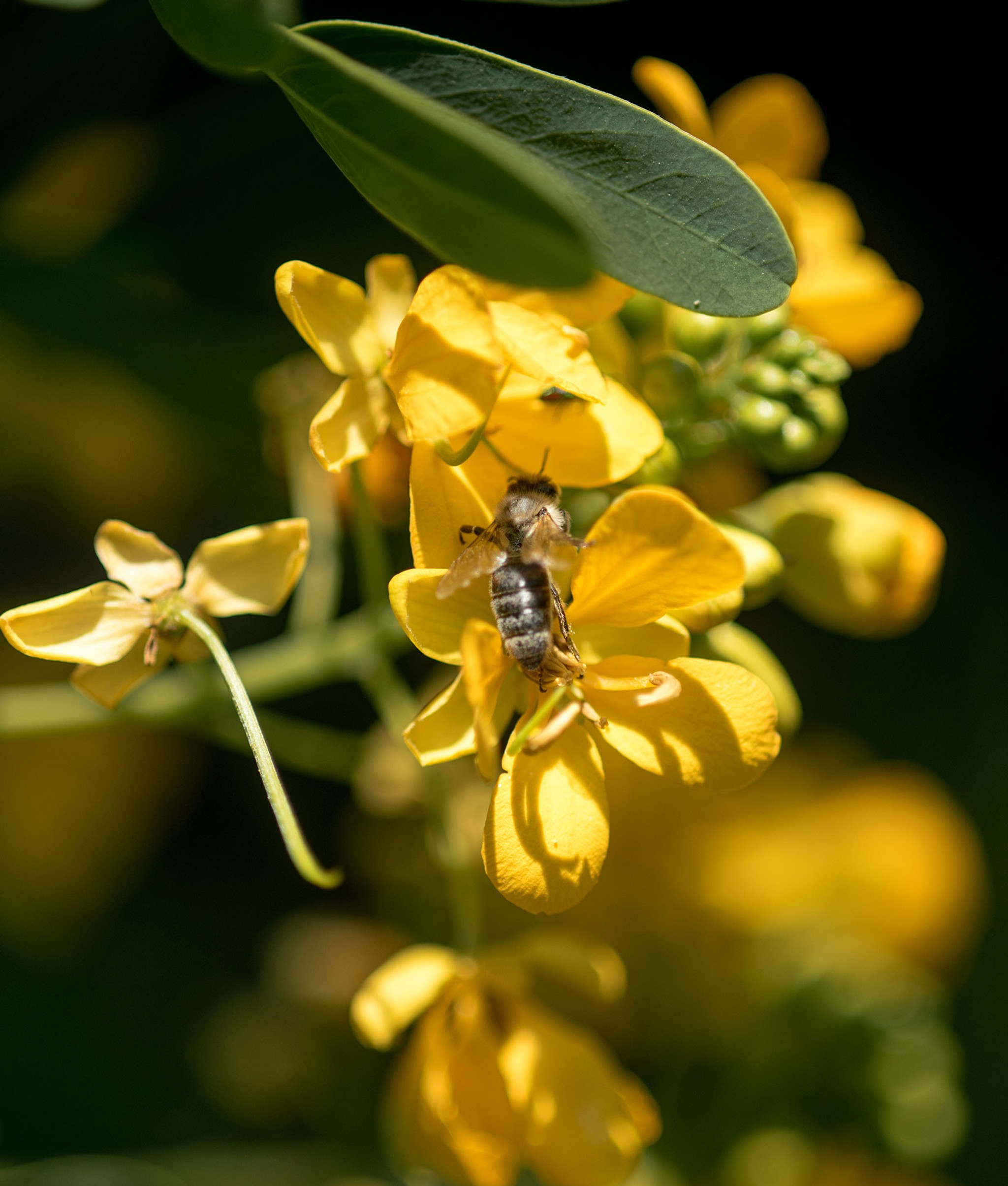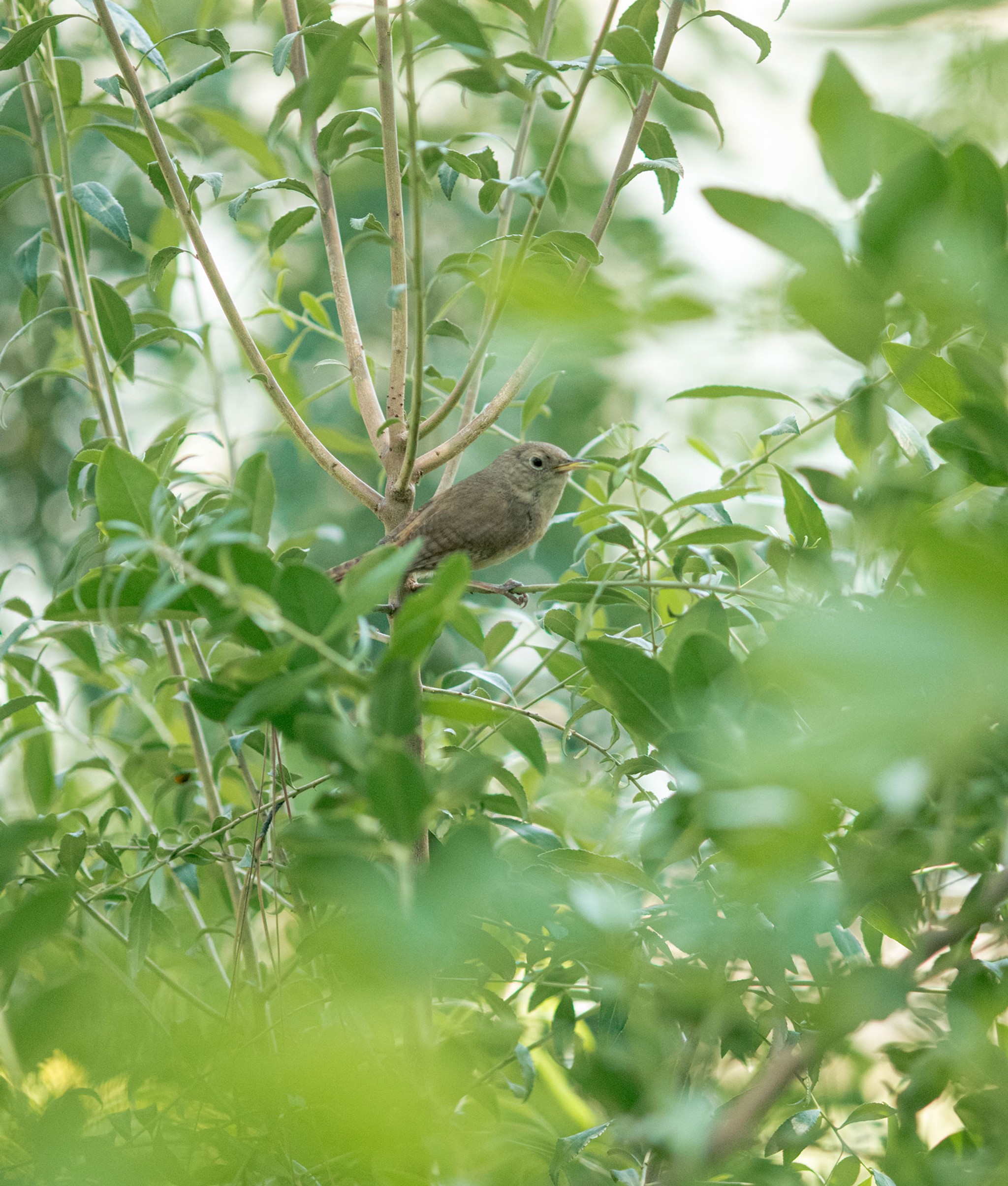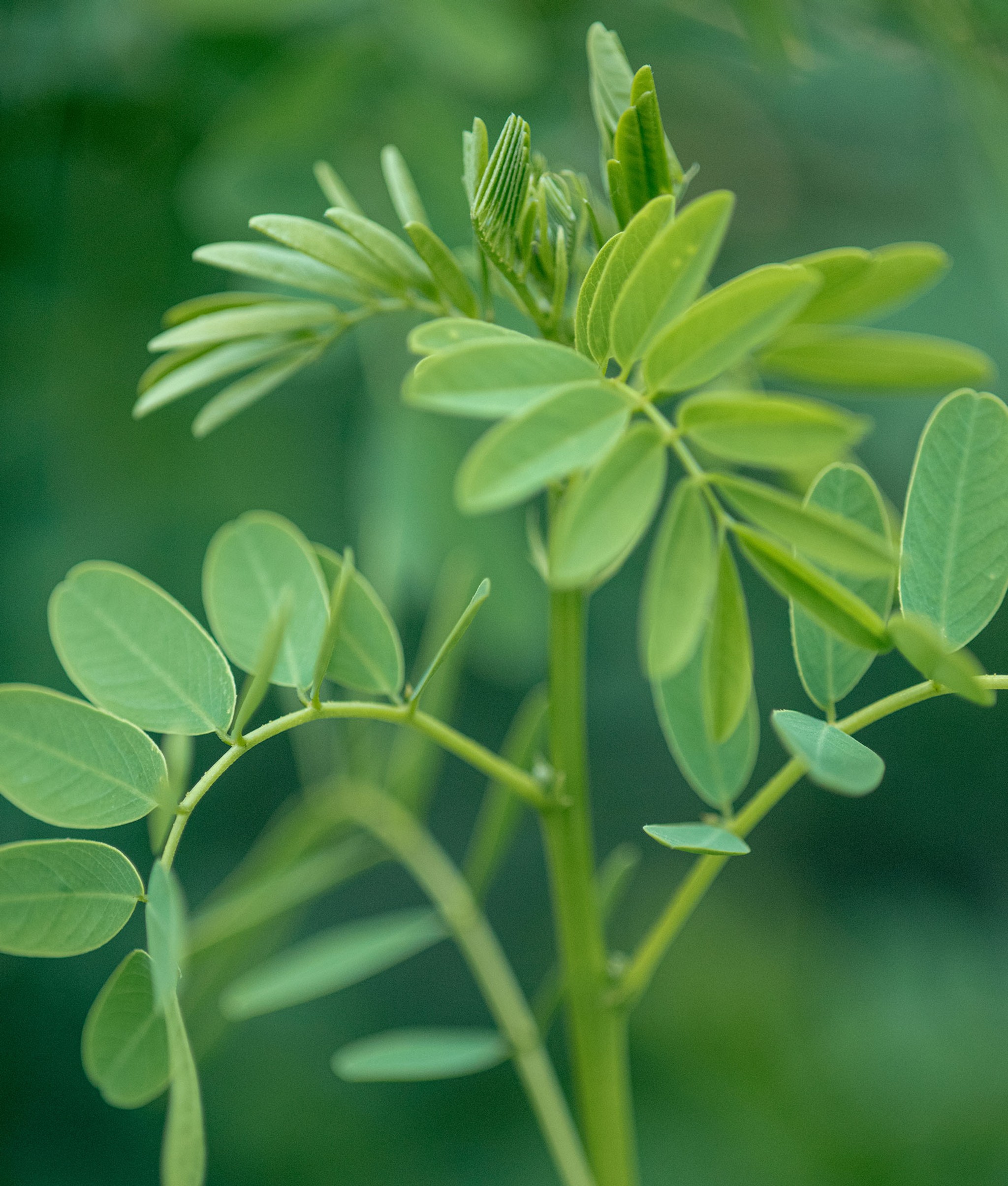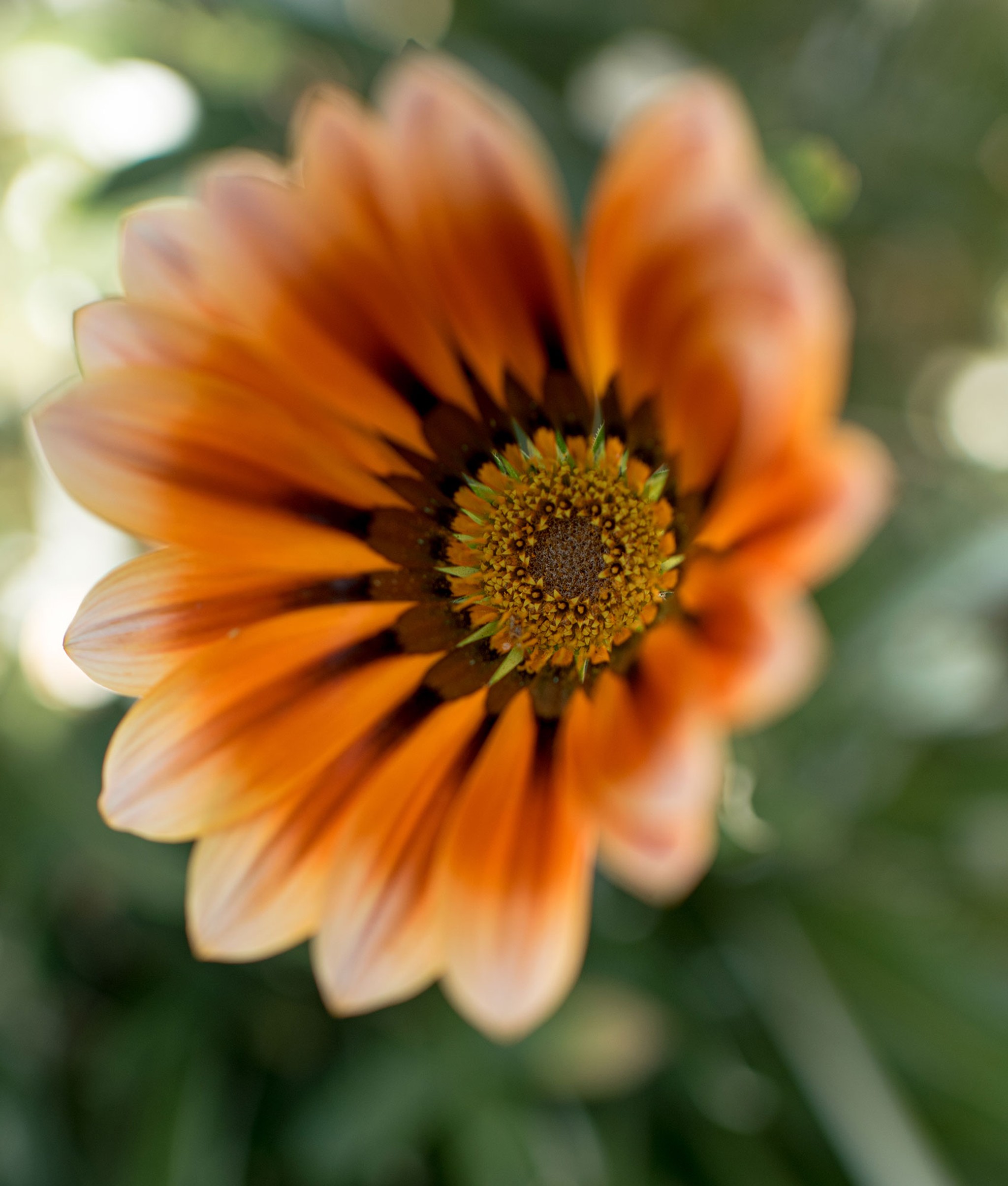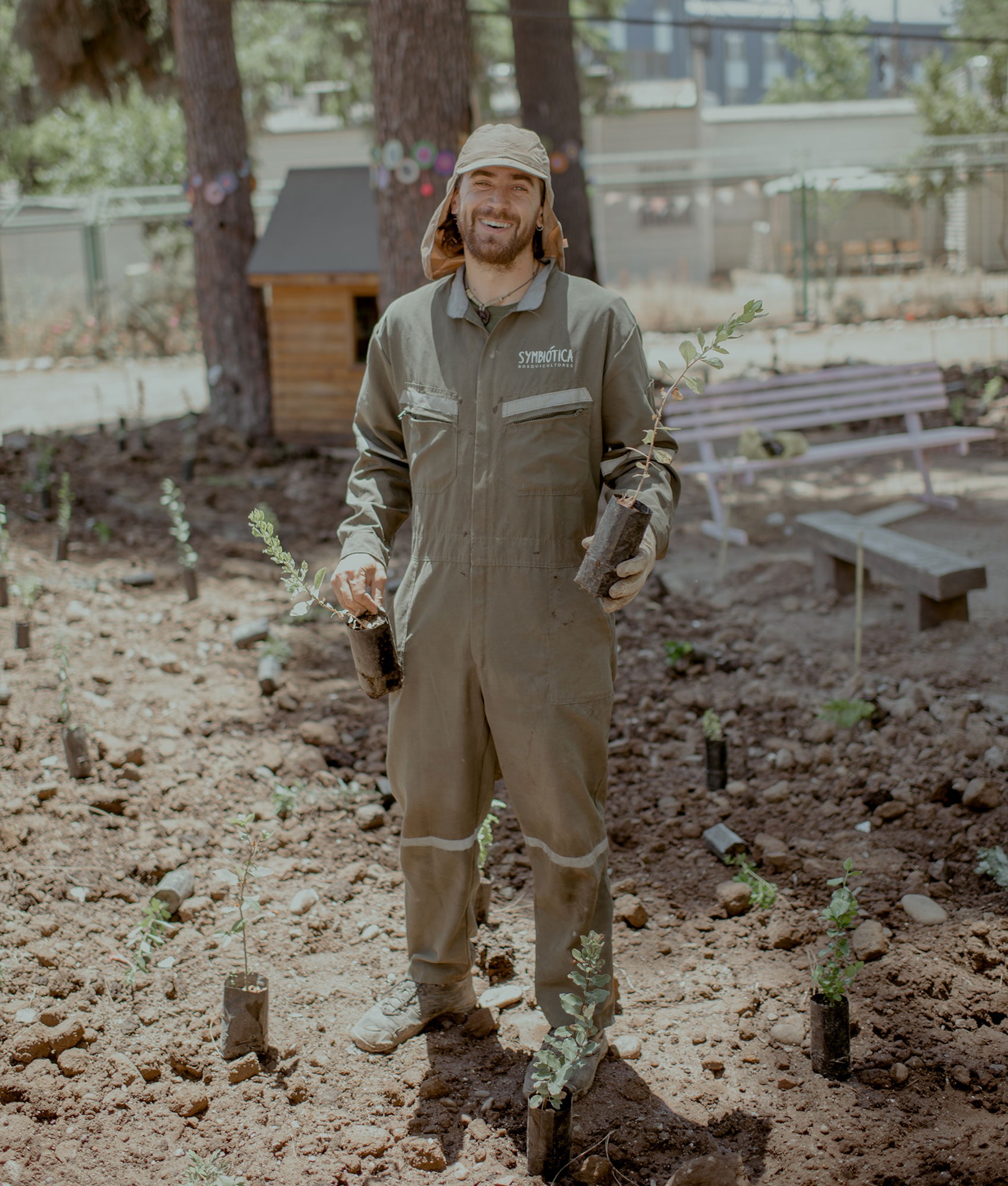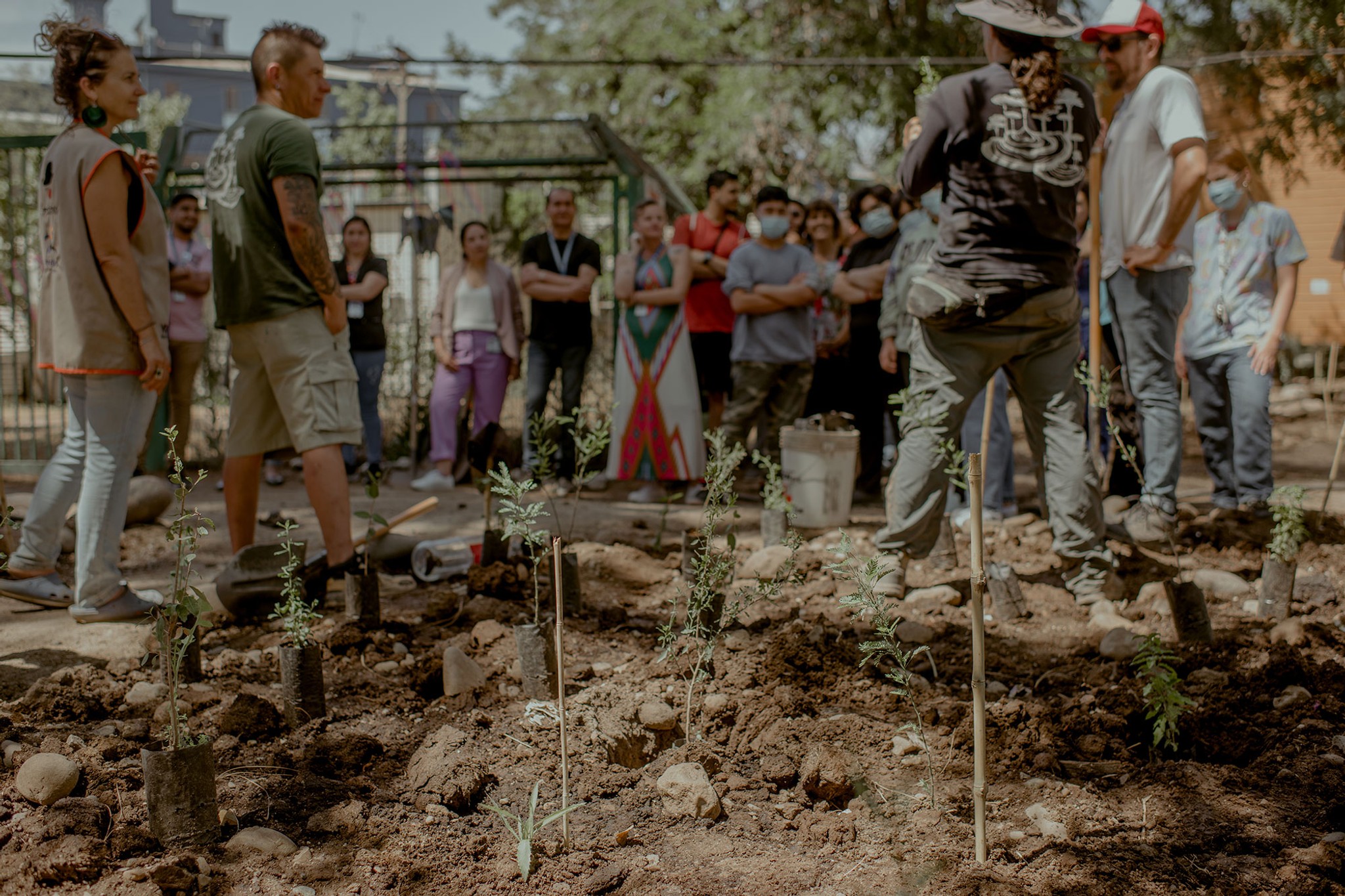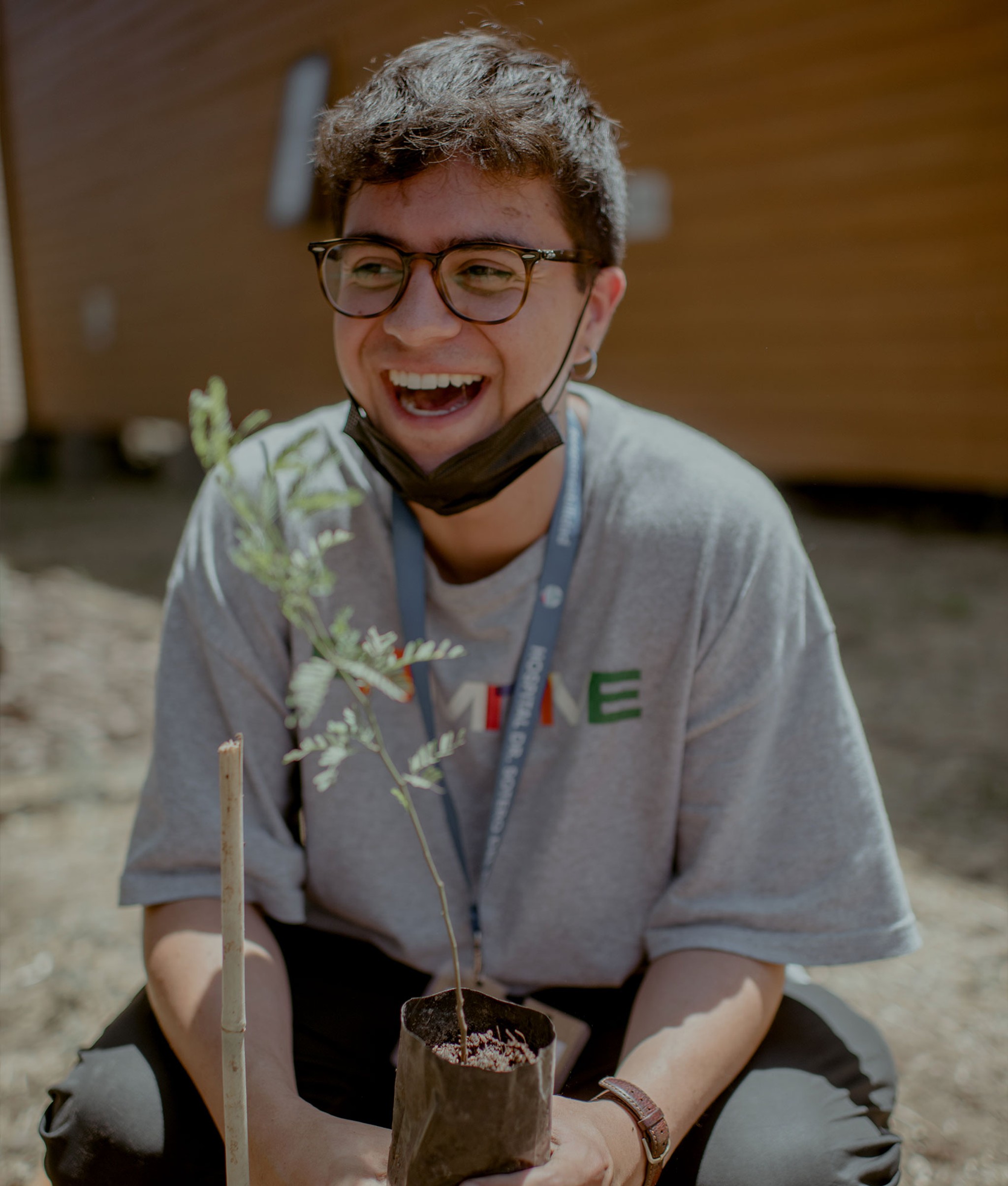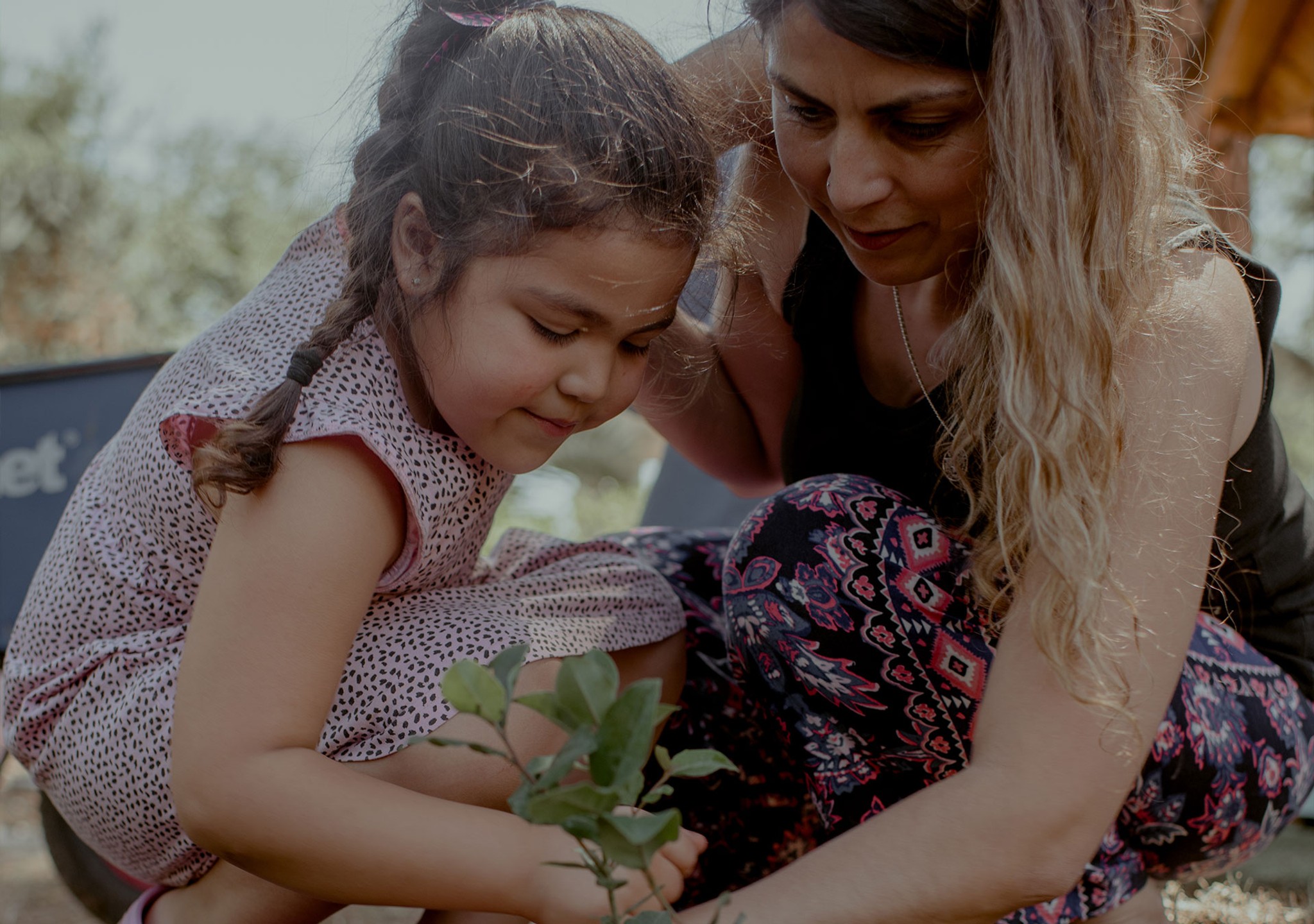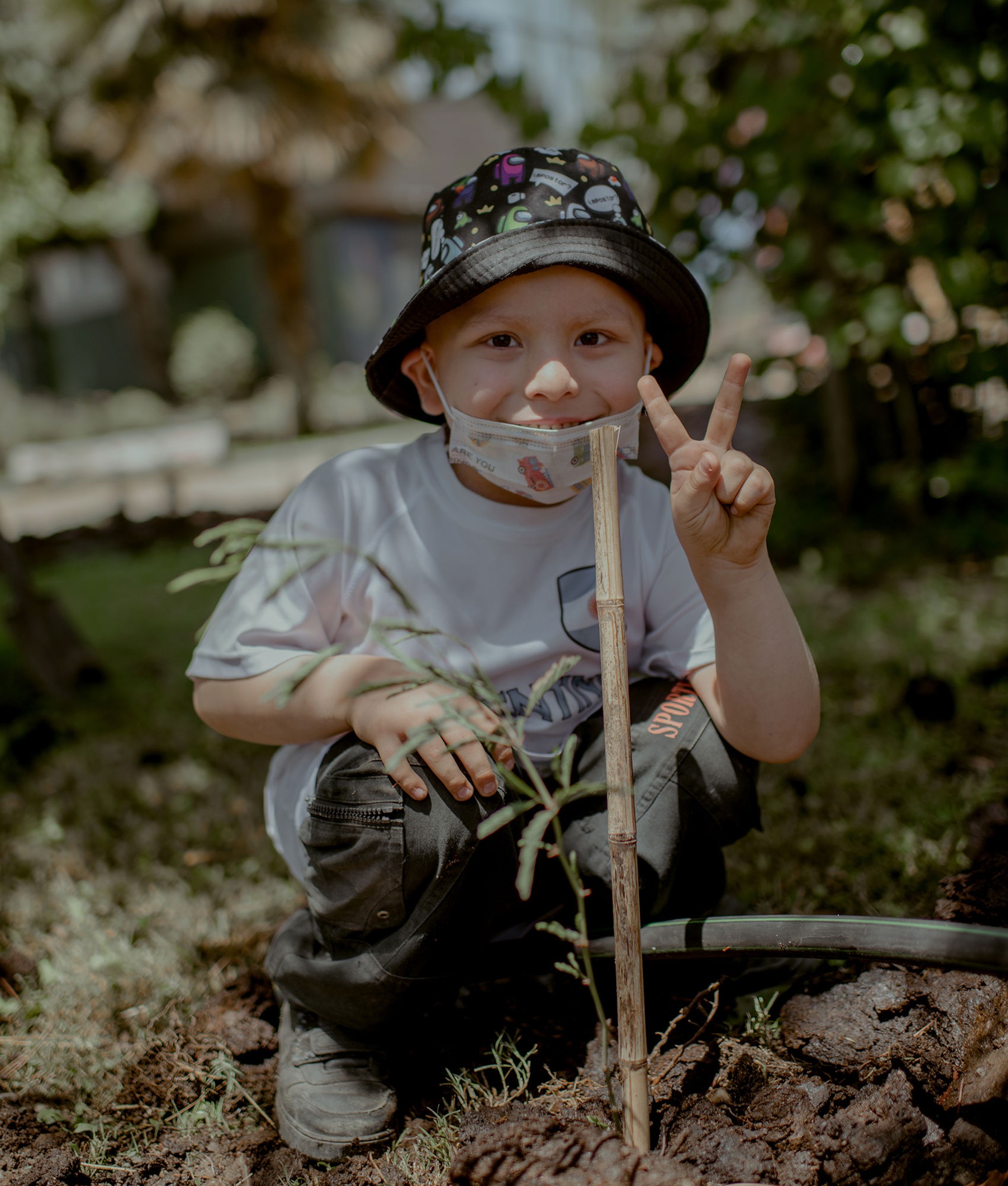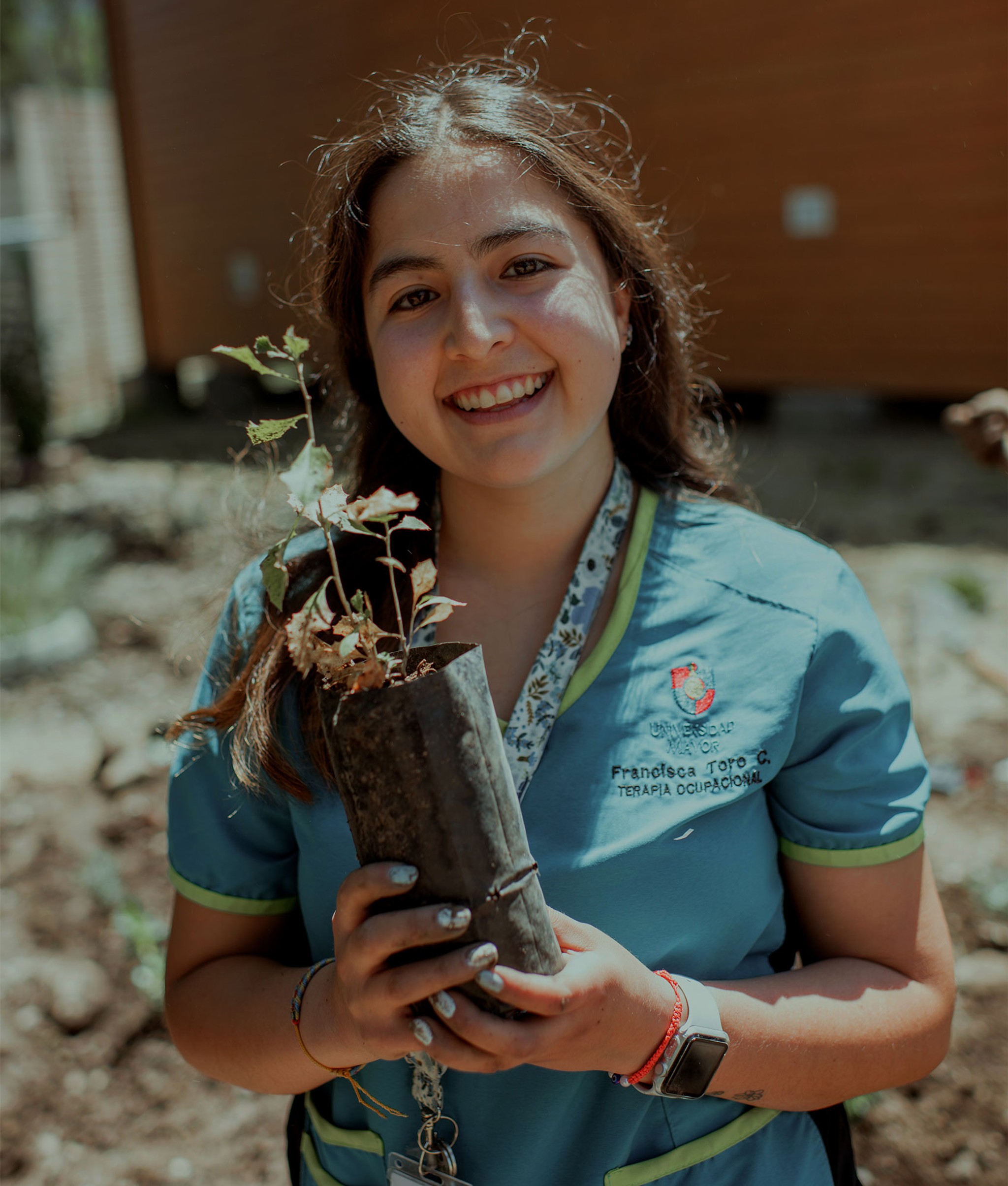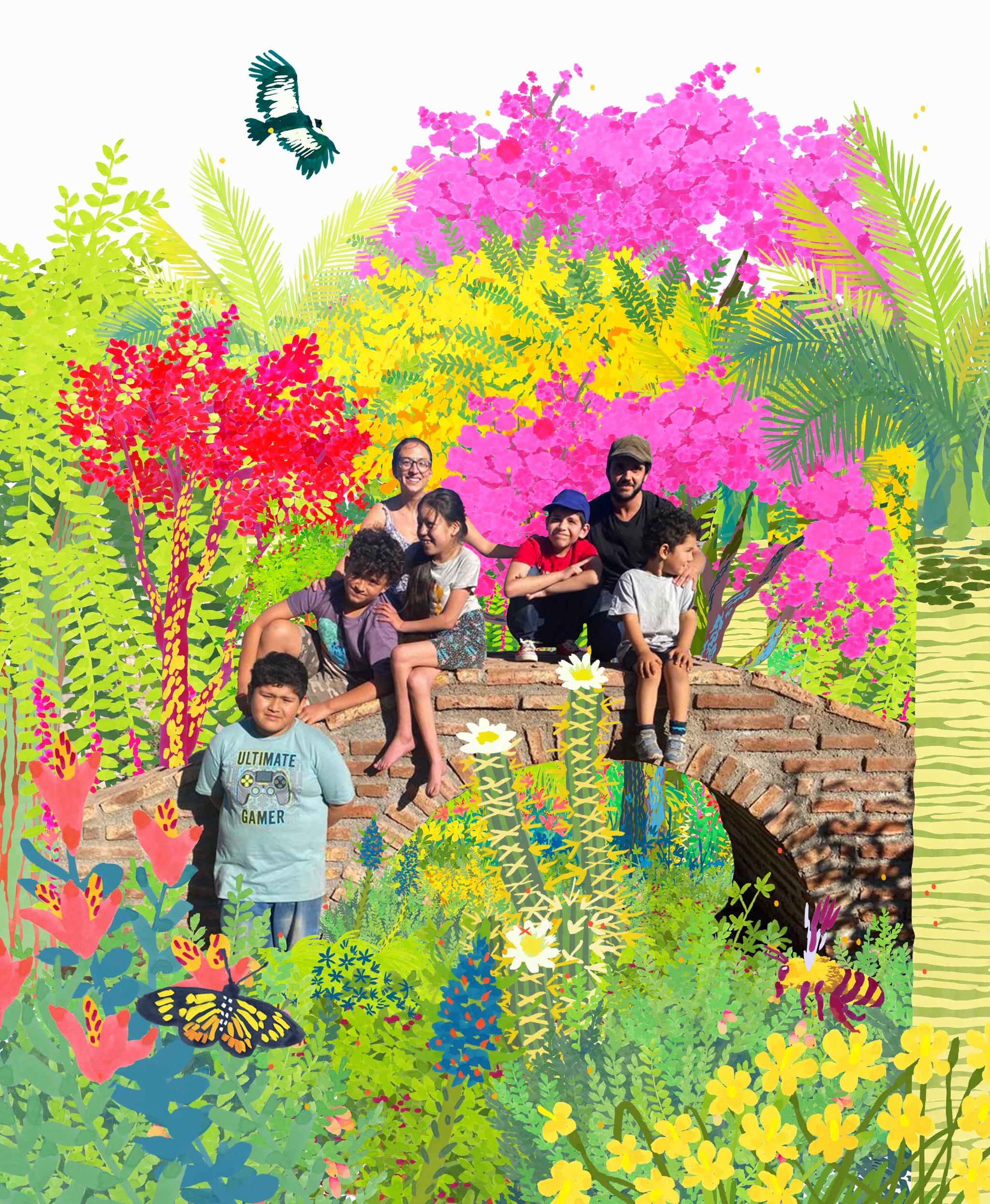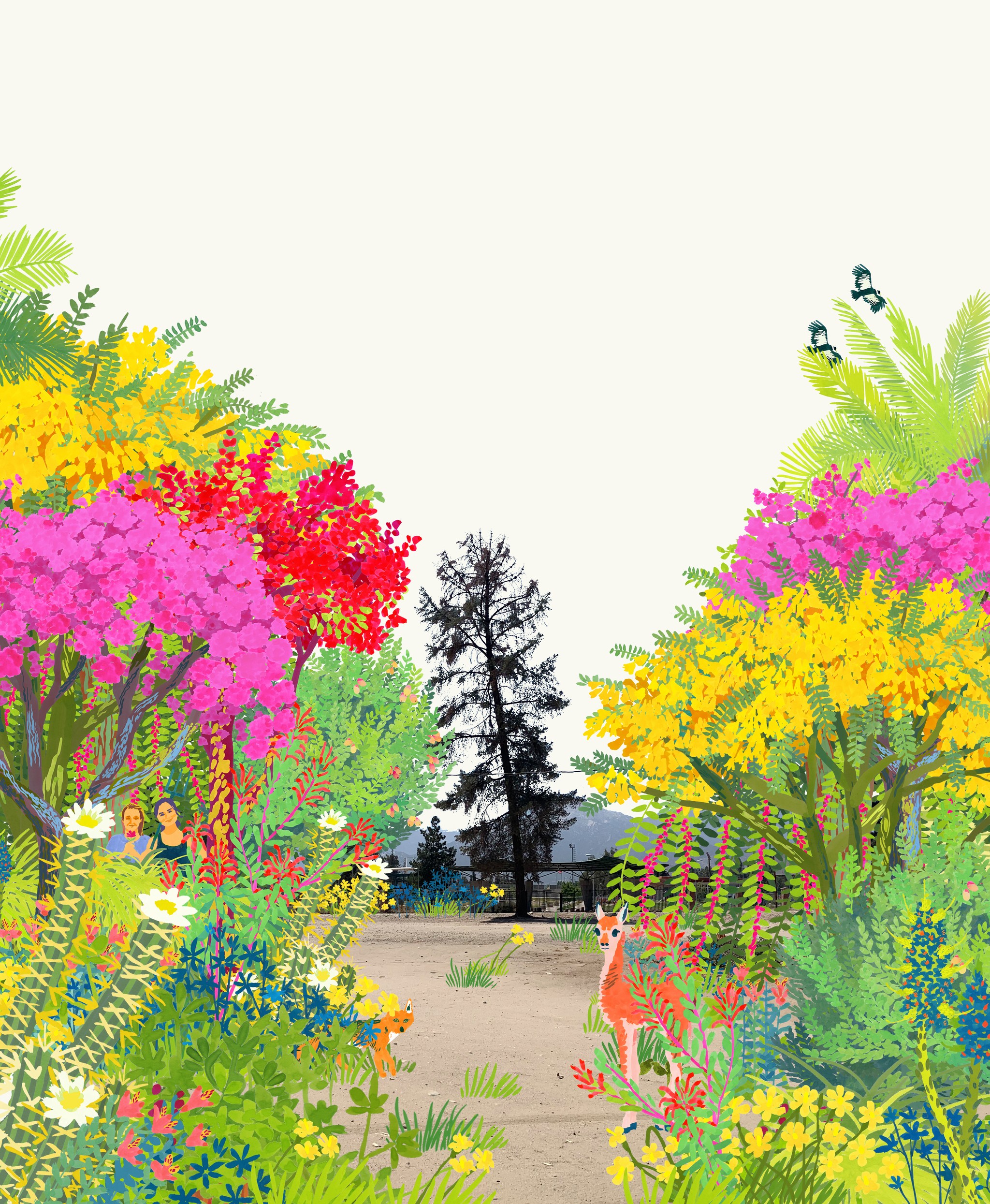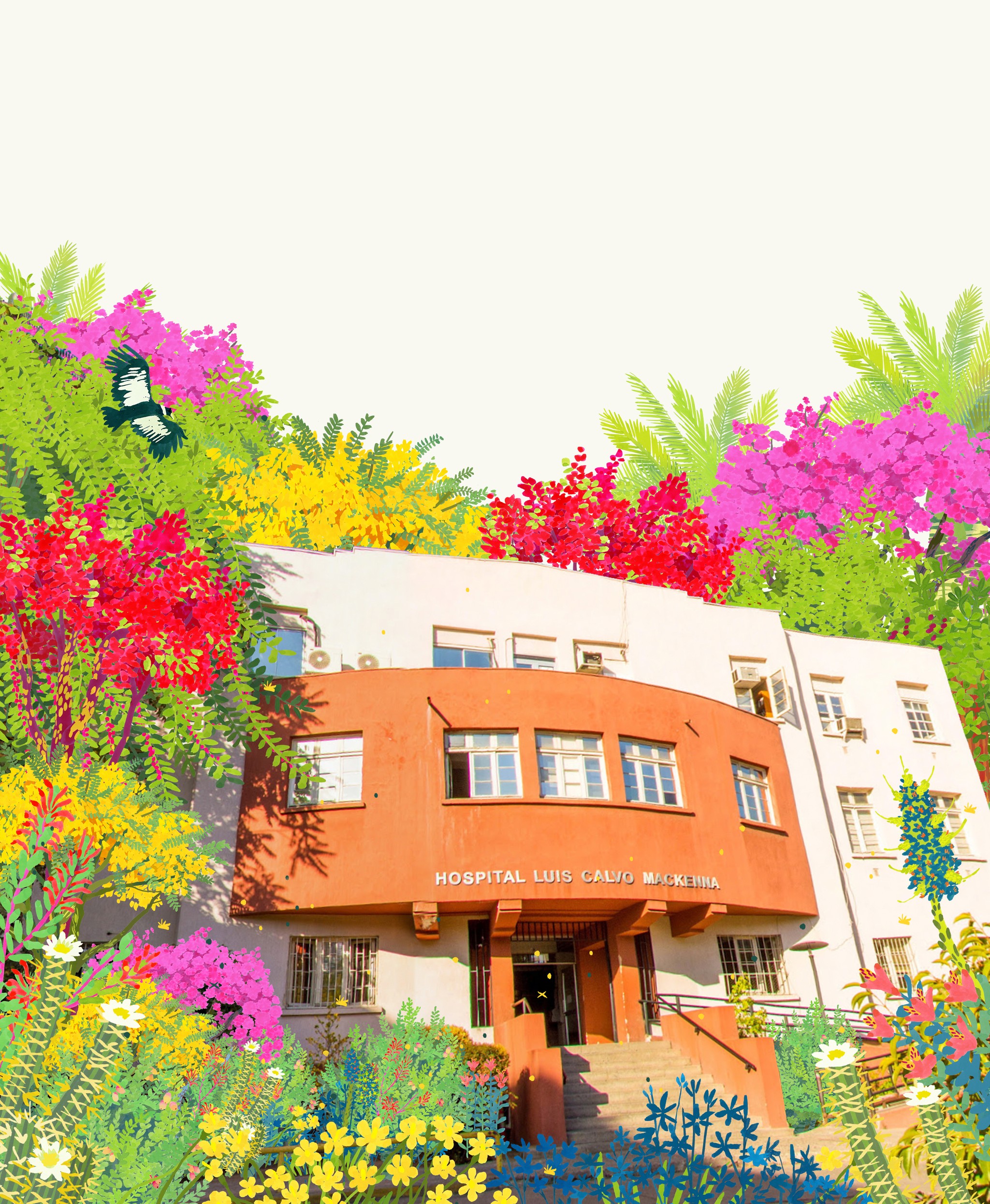Trapa Trapa Forest
A place of peace for patients, families and caregivers.

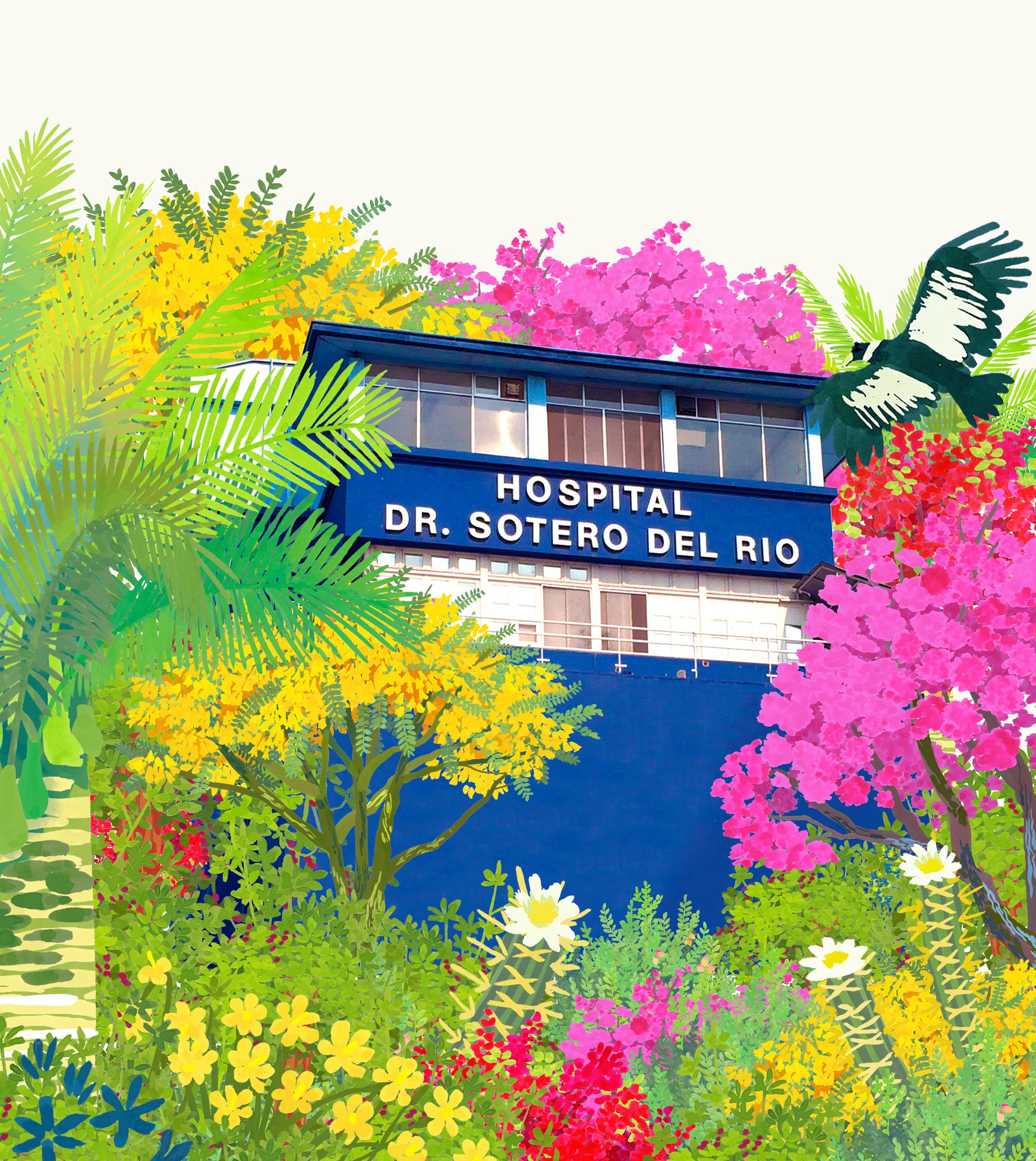
0
Trees
0
Square Meters
0
Native Species
0
Youth Impacted
‘Trapa Trapa‘ means ‘place of peace’ in Mapudungun, the native dialect of the indigenous Mapuche people. The forest is located at the Sotero del Río Hospital, one of the busiest hospitals in Chile.
This Miyawaki Forest has been filled with indigenous medicinal species, inspired by the healing work of the hospital, to connect 21st century healthcare with indigenous knowledge. It is hoped that in highlighting this link between nature and modern healthcare, the forest will help people to understand the immense value of our natural resources and how people and our planet are intimately connected.
Forest Maker
Symbiótica
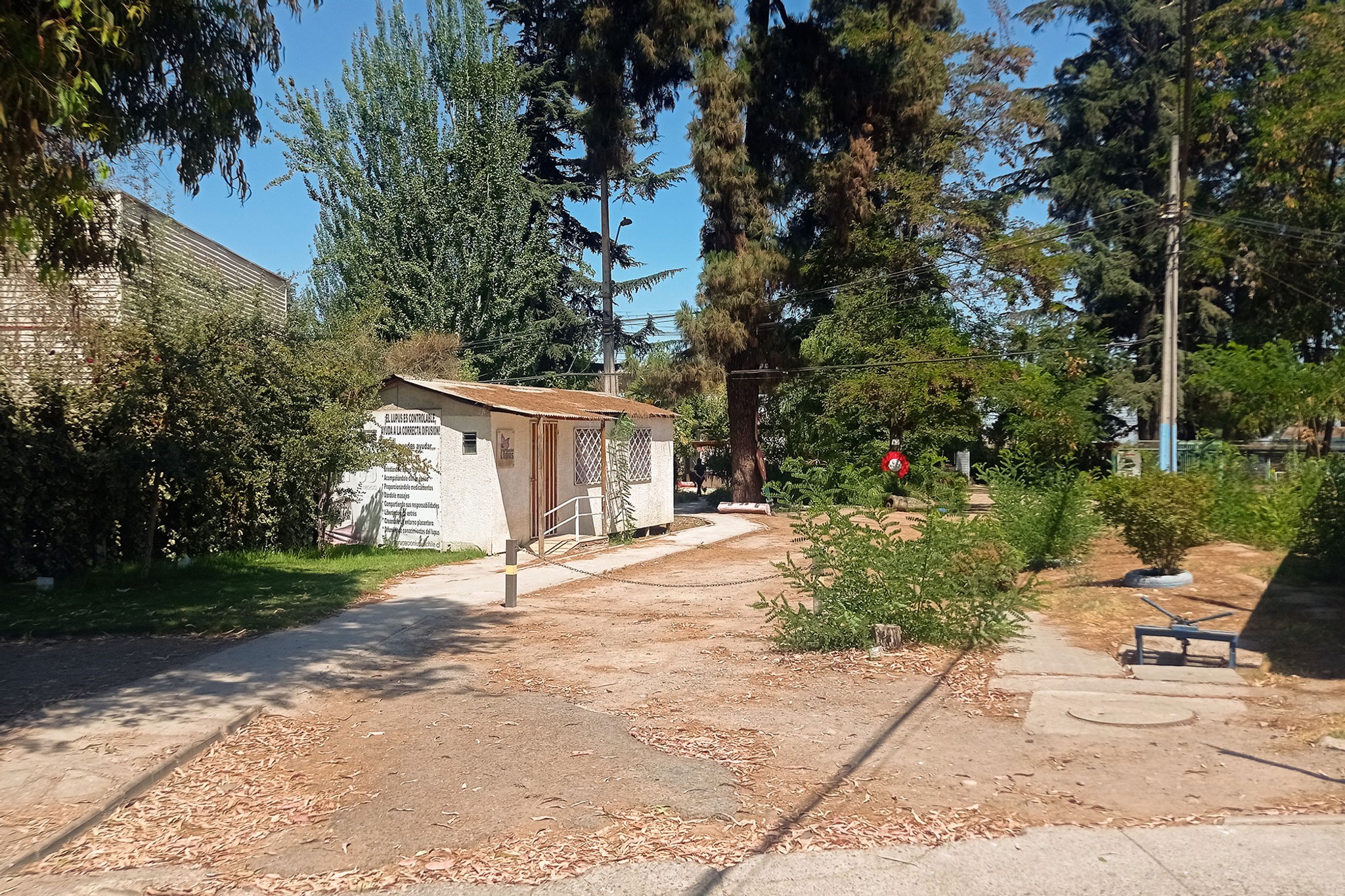

Forest Partner

Urban Heat Profile
The Urban Heat Island Effect is affecting cities more and more each year and temperatures in urban areas can go up to 12 degrees hotter. This can be reduced and prevented by planting urban forests like this. We collected the air temperatures on a hot day in February at Trapa Trapa Forest and saw amazing results.
0°C
Air Temperature Difference
0°C
Surface Temperature Difference
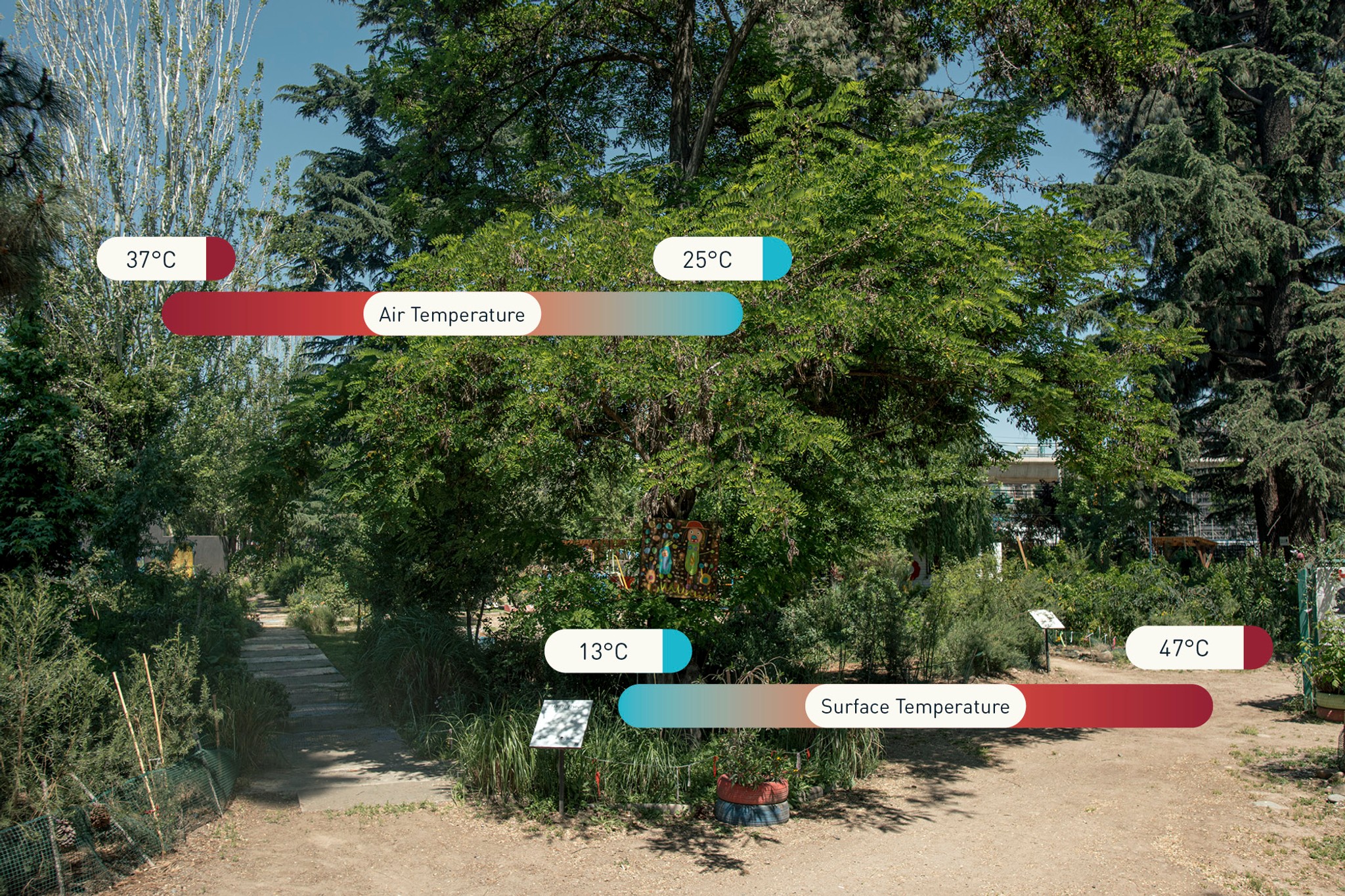
Forest Report: 2024
0 Years
Forest Age
0%
Survival Rate
0m
Average of Tallest 3 Trees
This forest is a definite success due to the daily care of the "Sonrisólogos" team, especially the gardener, who has been working in the hospital’s green areas for over ten years. The team’s commitment to forest care is evident - they have been constantly adding mulch as needed, preventing invasive species from encroaching on the forest, and making visitors to the hospital aware of the forest.
The forest sits next to a busy avenue, with lots of car traffic and a metro line - and their noise is mitigated by the presence of the forest, making it an essential space for disconnecting from the noise of the city and reconnecting with nature.
The various large tree species present in the forest give lots of necessary shade to the planted area, protecting it from the extreme heat of Santiago. There’s continuous irrigation, and all the dry leaves that fell from the forest trees have been used as mulch. All these factors contribute to the high survival rate of the forest - bringing it to lushness, while grasses have started colonising on the paths nearby the forest. We’ve also seen lots of animal biodiversity in the forest - thrushes, blackbirds, and doves; cachuditos, loicas, harriers and pintails, as well as butterflies, grasshoppers, and bees.
Biodiversity Notes:
Forest Report: 2023
0 Months
Forest Age
0%
Survival Rate
0m
Average of Tallest 3 Trees
This project is a wild success, used daily by the “Sonrisólogos” team (professional laughter therapists with more than 15 years of making hospital patients giggle). The gardener, who has been working for around 10 years in the green areas of the hospital, is especially thrilled, as are the patients who have come to depend on the restorative power of the forest.
The forest even dampens the noise generated by a nearby busy road and subway line, thereby making it easier for caregivers and patients to disconnect from the noise of the city and reconnect with the calming benefits of nature.
In addition, different species of very large trees shade the plantation (and protect it from the extreme heat of Santiago), there is continuous and abundant irrigation, and all the dry leaves that were previously collected were used as mulch. The combination of these factors contributes to the high survival rate of this project. As for the organisms observed, a high attendance of birds and insects is seen, such as thrushes, blackbirds, turtle doves, butterflies, bees, etc.
Biodiversity Notes:
Planting: December 2022
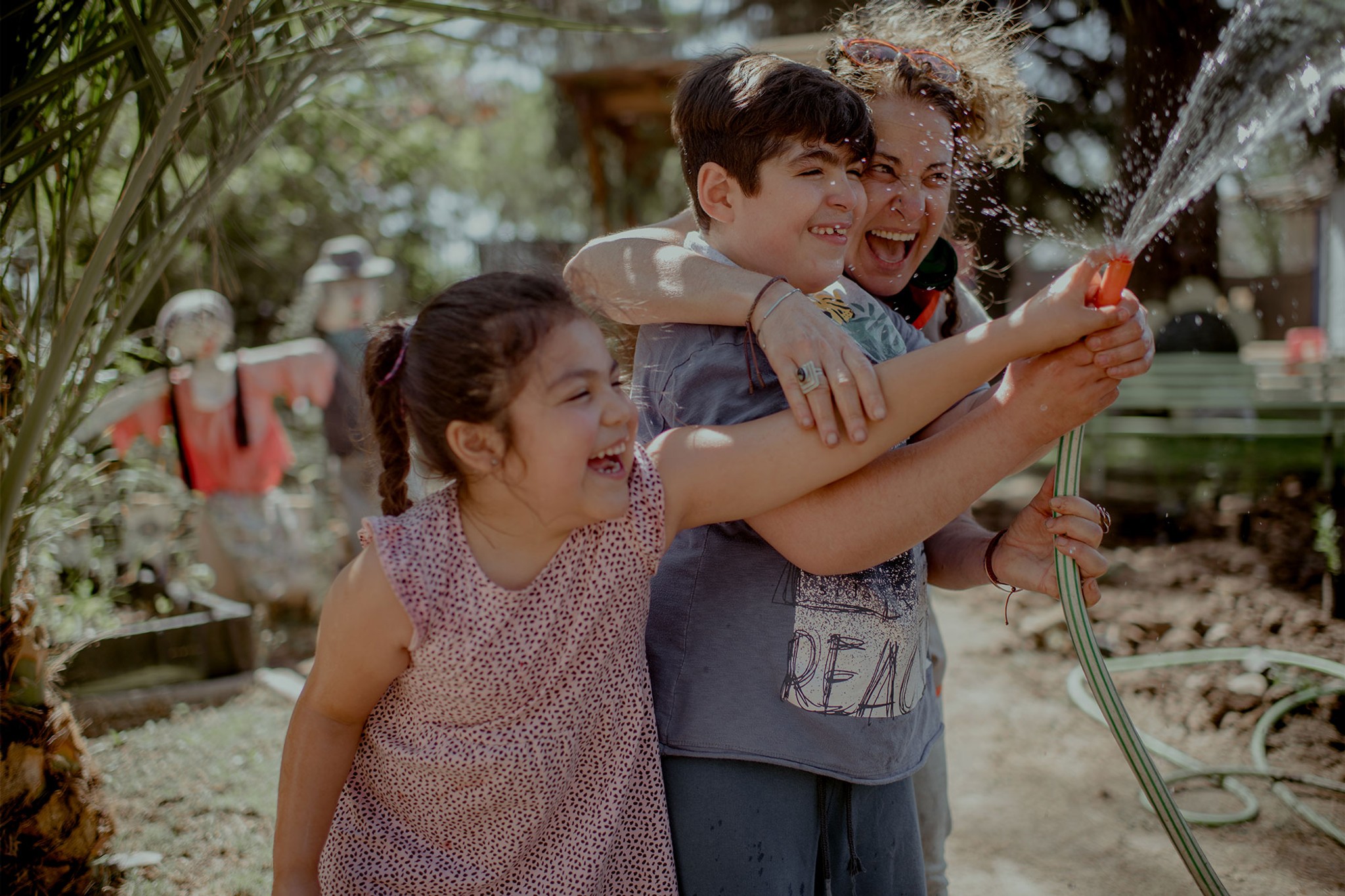
“A hospital does not have to be a sad place. Despite the difficulties, we are there to sow joy and hope.”
Susana Alegría & Carola Garabano, Laughter Therapists & Founders of “Sonrisólogos”
Why the Trapa Trapa Forest?
Working together with Su and Carola - professional laughter therapists with more than 15 years of making hospital patients giggle with their “Sonrisólogos” Team - Trapa Trapa Forest has become a source of green respite in an otherwise highly urbanized setting.
It serves as a place for fun, laughter and relaxation; a haven where patients and their carers can have a break from their hospital routines and soak up the beauty and benefits of nature.
